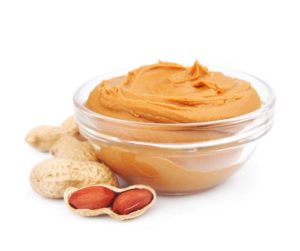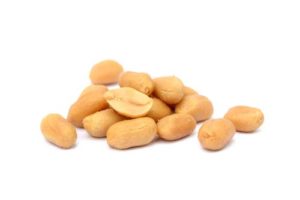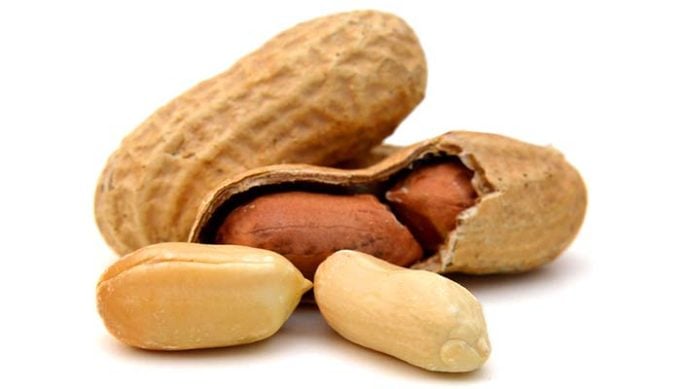Peanuts are the most popular type of nuts in America. But can dogs eat peanuts just as we can, and are peanuts for dogs safe to consume? What are the benefits of feeding peanuts to dogs, and are there any side effects? Let's take a closer look.
If you've been wondering, “can I give my dog peanuts,” the answer is YES – dogs can eat peanuts and they are not toxic to dogs. But while dogs can have peanuts, like with most other human foods, it's a little more complicated.
You know your dog loves treats. Certain nuts, if you don’t over do them, are safe as well. Not all dogs will show much of an interest if you drop a nut on the floor. Though, it’s worth knowing the facts on which peanut products can harm, and which are safe.
Peanut Butter
For instance, your dog will probably love nothing more than enjoying a spoonful of gooey peanut butter. Not all peanut butter recipes are safe, however. Before you give your dog this delicious treat, let's take a closer look at what you should be looking for. Exactly what makes a peanut butter, pet safe.
 Peanut butter contains protein, vitamins and good fats, so that is all a plus. It is high in these nutrients, and if taken in excess could cause problems such as obesity. Excess weight is just as much a problem in dogs, as it is in humans.
Peanut butter contains protein, vitamins and good fats, so that is all a plus. It is high in these nutrients, and if taken in excess could cause problems such as obesity. Excess weight is just as much a problem in dogs, as it is in humans.
To help you make the decision on peanut butter products, there are a few things to understand about the ingredients. Don't be put off by the strange titles of the ingredients, it is important to learn what to look for.
5 bad ingredients in peanut butter
Xylitol. Try and get one that does not contain Xylitol, as this ingredient is toxic to dogs. Whilst it is a natural sugar replacement for humans, if pooch eats too much of it, he/she will become ill. It is also known as sugar alcohol.
There are other sugar alcohols that are not toxic to canines. The rule of thumb should be that if it does not state which one it is, then don’t take the risk.
Hydrogenated fats. Peanut butter has some good fats (monounsaturated), it also contains bad fats, (trans fats.) When going through the list of ingredients, if it states Hydrogenated or even Partially Hydrogenated Fats, then don’t give it to your dog. Nor should you eating it, for that matter.
Aflatoxins. This may be another concern for pet owners. It comes from a natural fungus that can grow on the shells of peanuts. Studies have shown that it can cause liver cancer. Often the amounts of Aflatoxins are higher in the more healthier peanut butter products. This is because the peanuts are usually freshly ground, and not treated in any way.
Salt. Peanut butter contains salt, which dogs, just like us, do need. Both dogs and humans only need it in small amounts. Then again, if you treat your pet to peanut butter, it should only be in small amounts anyway. Check if your dog's diet is already high in salt with the other foods you give to pooch, as an extra precaution.
There are ways to treat your pooch with small amounts of peanut butter, as an occasional treat.
5 ways to give your dog a peanut butter treat
1. From a spoon. There are a couple of useful points on this method. You are participating as you hold the spoon to allow pooch to lick it off. This is always great for that bond building between you and your dog. Though hold the spoon tight, they may be so excited that they might want to eat that too.
2. Feeding them peanut butter this way, is also useful in disguising the taste of medication.
3. Wrapping it in a thin piece of meat, such as ham or beef, will make it to make it double tasty.
4. Mix peanut butter in something that your dog loves to eat, such as yogurt or ice-cream, then freeze it. When he’s panting in the hot summer heat, break out the cooling and flavorsome ice cubes.
5. Place a spoonful of peanut butter in a canine chewy bar, or toy. While pooch is having a good chew, they can search out that yummy peanut butter treat. This is just like they would in the wild, with bone marrow.
Peanuts 3 Ways
 Dogs can suffer nut allergies. Though not as often as humans can. Do tread carefully when first introducing nuts as a treat for your pet.
Dogs can suffer nut allergies. Though not as often as humans can. Do tread carefully when first introducing nuts as a treat for your pet.
Some of the signs to look out for are excessive, sneezing, coughing, face rubbing, diarrhea, skin rashes or vomiting.
- Better to give pooch RAW peanuts that are not salted.
- Dry roasted peanuts are the best safe option for your dog.
- NEVER feed your pooch salted peanuts. Don't worry though, the occasional one dropped on the floor, will be fine.
2 Other Nuts considered safe for a dog to eat:
Cooked Cashew nuts, even roasted are ok as an occasional treat. Careful as too many may cause a tummy upset. DO NOT give them raw. Cooking them eliminates the toxins.
Hazelnuts are not toxic to canines. The round shape could make them difficult to chew, so they might swallowed them whole. This could then lead to obstruction of the intestines.
7 Nuts to be AVOIDED for dogs
- Almonds do not digest well.
- Pistachios are have too much fat.
- Walnuts have toxins.
- Pecans have toxins.
- Macadamia are too high in fat content, and also have toxins.
- Hickory are very high in fat content, and also have toxins.
One last word of warning: if you just happen to have a black walnut tree in your yard, pick up the nuts and shells as they drop, or keep pooch away from it. These are on the VERY DANGEROUS list of nuts for dogs.
The chances are, that unless your dog eats peanuts from puppyhood, he may show no interest in nuts as an adult. Should one fall on the floor, the only attention pooch might give it is a quick sniff, and cursory lick. Should your dog eat an odd nut, even one from the danger list, all should be well, unless it has caused an obstruction.
There are lots of varieties of canine treats on the market, that they may prefer to nuts. Meat treats provide as much protein and fats. Other than the occasional peanut butter treat, nuts are not a natural food for dogs.
Finally, no more that around 10% of a dog’s diet should consist of treats. Whatever you give as a reward, don’t give too many in a day.
READ NEXT: 32 Dog Food and Feeding Myths Debunked [Infographic]













